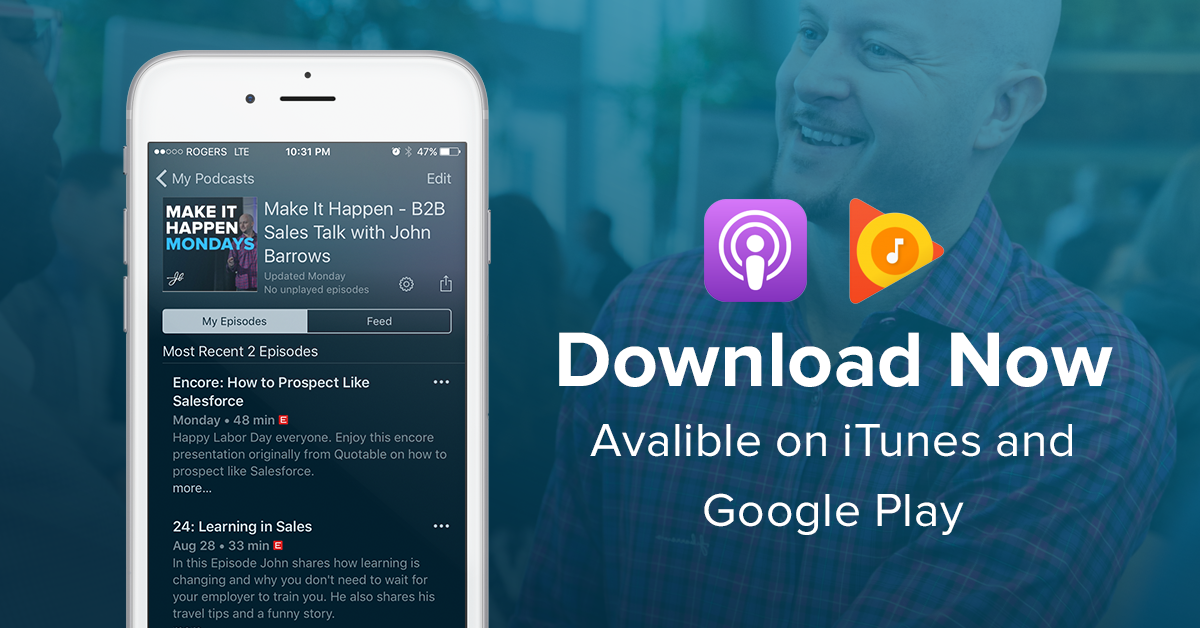I’m speaking at the ZoomInfo Growth Acceleration Summit today on the Missing Link Between Sales and Marketing Alignment. Since many of you won’t be able to make it I decided I would write out the presentation I’m giving and share it with you here. Enjoy!
The Missing Link Between Sales and Marketing
My college degree is in Marketing, but I’ve been in Sales for 20 years so I know the value of both roles while also seeing the constant disconnect between the two. Marketing usually develops a bunch of content, throws it over the wall to Sales — who uses it (or not) — and then tells Marketing the content or leads are crap without any real data to back up their claims. When the lead flow isn’t enough to drive the necessary revenue the blame game starts and no one wins. This disconnect between Sales and Marketing is the exact reason the role of CRO (Chief Revenue Officer) became popular a few years back.
To help align Sales and Marketing I use the fundamental process of sales developed by E. Saint Elmo Lewis back in 1898 – A.I.D.A (Attention, Interest, Desire, Action). These are the four mental stages we all need to go through before we buy something. First something needs to get my attention, then I need to be interested in it, then I have to have a desire for it, and then I move to act.
Marketing is typically good at developing content that drives brand awareness and attention for inbound lead flow while also creating good content for people who have expressed interest in the product (case studies, pitch decks, etc.). The problem comes when providing the Sales team messaging they can use to keep attention when making calls and engaging with people who haven’t heard of the company before. In today’s world, we literally have seconds to get someone’s attention which is why the typical elevator pitch that Marketing develops fails when using it to make calls. It’s usually way too long, too general and filled with buzz words that are not natural for a sales rep (or any normal human being) to say. This is where I think sales reps needs the most help but get the least support – what do I say when someone picks up the phone?
Marketing actually does create messaging Sales can use to get attention but they tend to bury it in the case studies, which are the best Marketing materials a company has, in my opinion. What we say about how great we are (“leading provider of…”) no one cares about. Third party validation by Gartner is better, but still not great. What our clients say about the work we do is gold. The results we drive for our customers is the number one competitive differentiator any of us have, especially at the beginning of the sales process. If leveraged correctly, these case studies can help develop Sales ready messaging that grabs attention and engages a dialogue with a prospect.
My favorite way to align Sales and Marketing is with a simple a lunch-and-learn with a one-hour call blitz (Power Hour) and feedback session afterwards. During the lunch-and-learn Marketing comes in and presents on a specific persona that values the company’s product or solution. They teach the Sales team what that persona cares about, what their priorities and challenges are and what aspects of the company’s solution align with them. They then present a case study specific to a client and persona and talk through the challenge, solution, and results. This result can then become the message (Attention Grabber) they use to make phone calls into that persona by saying something like “We showed X Company in your industry, how to drive X results.” With the focus on one persona they can also come up with 2-3 qualifying questions specific to that persona that are more insightful than “tell me about your priorities.” Lastly, they have a case study to share when the client expresses interest.
Armed with an Attention Grabbing statement, specific qualifying questions to a persona, and a case study, the sales reps are better prepared to make phone calls into that persona. If a group of sales reps call into one persona using that same approach during a one-hour call blitz they can easily track the results and provide immediate feedback to Marketing about how the approach worked. Marketing can also sit in on this call blitz to hear how the messaging is being used in live situations and make adjustments on the fly or provide instant feedback to improve results. Incorporating the lunch-and-learn with a one-hour call blitz once a week helps both departments work together more effectively to drive results.
This approach won’t fix all the problems between Sales and Marketing but it moves things in the right direction. Give it a shot and let me know if it works for you.
Make it happen!






